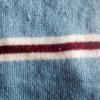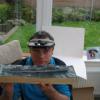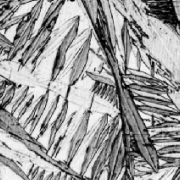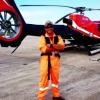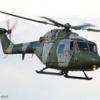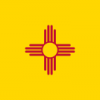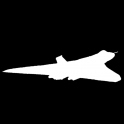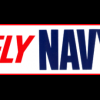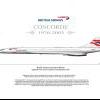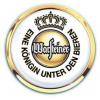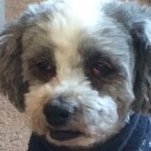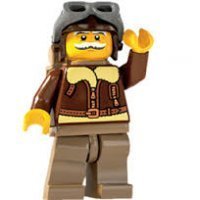Leaderboard
Popular Content
Showing content with the highest reputation on 30/08/21 in all areas
-
Hello, I've just finished this Thunderbolt and managed to snap a few pics before breaking my main light. First foray into 48th warbirds, riveting and a "serious" NMF attempt. M boxing with the addition of Eduard wheels (failed to glue those squarely 😓), HGW belts, EagleCals decals and MrColor SuperMetallic paints. Til next time!24 points
-
This ones been kicking around for some time. Pretty much finished now with the addition of the last crew member. Tamiya 1/48 scale Elephant with resin and 3D printed figures. The kit is typical Tamiya I only added metal barrels and the Monroe Perdu paper zimmerit. Lots of fun to build and paint. I hope you like it. Thanks for looking in. Dan23 points
-
Hi guys, a well-known model with a few modifications: aerial mast made of Brasstrutz, Rob Taurus clear canopy, original wheels drilled from the outside and Eduard Spifire hubs inserted. The decals are a mix of Airfix and Kora sheets.22 points
-
Vampire, Venom, Hunter, Canberra--are all iconic names of the postwar British aircraft industry. The Valetta is not among them. Not that it was a bad aircraft. On the contrary, it was quite serviceable, and by British standards--successful--with over 260 built for the RAF. Moreover, it was ready for service when the UK needed to replace (almost) all its war-weary Dakotas and prepare for the new burdens heralded by "Winds of Change." My little vignette is set in Aden during winter 1960, with an aircraft just released from the Ferry Service Squadron "working up" for operations with newly re-activated 233 squadron. There's a small conversation going on toward the back of the aircraft between an Army officer (with beret) and an RAF NCO. It's slightly weathered, but not overly much. WD159 had just been rebuilt by Vickers in '57, and assigned to a ferry unit afterwards, so it wasn't too beaten up from pictures I've seen of the actual aircraft in Yemen. The Valom kit needs some minor fixes, and could do with more detailed instructions; but otherwise it's designed for a more mainstream audience. I used Polly-S acrylics for the white upper part and a mix of Vallejo metallics (silver, white aluminum, and aluminum) for the painted silver portions. The tires I painted in Vallejo black-gray, and used light brown pastel to simulate the dust on the treads.21 points
-
Second ever chopper, not a bad kit,lots of superbly fitting PE. The orange took several coats but I'm pleased wither the result. The Cartograph decals were the best i've ever used. I detailed the inside but it's difficult to see in these pics. Tamiya acrylics used over Ultimate primer and finished with Humbrol gloss varnish. Constructive criticism always welcome.21 points
-
Evening all, Finished this recently and I'm pretty happy with it, The kit goes together really well and is painted in Tamiya acrylics, apart from the nose and inner gear doors which are painted with Humbrol acrylic. Built oob apart from home made tamiya tape seat belts. Hope you like it. Thanks Dave.19 points
-
Another old work of mine. Hasegawa 1:72 Fw190 used to be easy to find at affordable price where I had been living. So I had built more than a few of them and still have some more left. It is simplified in many ways, compared to the newer offerings, but I still like its shape and ease of assembly. Nanond16 points
-
Good day to all. Now this is not a ghost from the past but my last built! This is the very impressive Eduard's kit of the Hawker Tempest with great details and an equally great choice of markings. I have used a couple of goodies from Brassin, ammo bays, wheels, brass undercarriage legs, and from Barracuda, seat radiator and spinner. Two things are of note: extreme care must be used when removing the tubular cockpit parts from the sprues are they are very fragile, putty was used in some places, mainly under the flaps and aft of the canopy, losing rivets in the sanding, scribe them again. I spoiled te canopy because the glue went all around, all my fault, and I want to thank Eduard spare parts service for their kindness and reactivity. On the pictures I have used a Rob Taurus vac canopy until I receive Eduard's part, it will do the job, but seems to me a bit undersized! I did all the markings with masks for the Tempest Mk V EJ762 of Flight Lt D C Fairbanks from the 274 sqn based at Volkel in 45. All paints are from Mr Color lacquers range. Thanks for looking. BEF038DB-AE85-4C2D-B53B-F7DF43E84430_1_201_a by jean Barby, sur Flickr C32A390F-3AB9-412B-B06E-724DA62D5539_1_201_a by jean Barby, sur Flickr 3768B233-D4B4-424F-A836-92B327DE70B8_1_201_a by jean Barby, sur Flickr 4EDDAEFD-3F2E-4011-AD58-036D51296C9F_1_201_a by jean Barby, sur Flickr 20315B64-4FEF-4E39-96F3-39DC4BA231F1_1_201_a by jean Barby, sur Flickr 5B665AB7-EFB4-40E8-AF11-8B7DBA4FB42C_1_201_a by jean Barby, sur Flickr 2BF2D232-D599-4B3C-A898-D16C88A01402_1_201_a by jean Barby, sur Flickr EC1C8AC2-F04C-4C93-839D-F97C3F6DAAD2_1_201_a by jean Barby, sur Flickr15 points
-
Greetings all, This has been a long-time 'as and when' project that I completed this weekend - Tamiya's 1/32nd F-4J finished as an F-4J(UK) of the famous 74 'Tiger Squadron' in the mid-1980's. It was built more or less out of the box, but with Mastercasters' FOD covers and YellowHammer decals. Paints were all Xtracolor enamels. It's the first time I have added crew figures to a model as my daughter requested that the pilots should be in it. I might add crews in the future as it adds a bit of life to the cockpit! All the best, Tom15 points
-
Greetings Brits! I have taken the summer off building, but somehow two weeks ago decided to finish the last project on the bench... It is a Great Wall kit (updated tooling with the fixes they did), P-61A of THE CREEP in 1/48! This was one of my favorite P-61 schemes and I spent some time to get this one right. I got the updated Great Wall kit, with the side of the box calling out the improved cowls and props. I also got the correct height nose gear and replaced the kit nose gear with white metal from Scale Aircraft Conversions so the P61 sits at the right attitude. I think I kept the rest from the kit. The decals were done by a custom decal shop and I got waterslide nose art and the spiders for the spinners made custom. Some may know The Creep was only available as decals in 1/72 on a old microscale sheet of P61's. Since I recently converted to 1/48 due to my age, I had to make the creep with custom decals and they turned out splendid! I also determined the tail number in the old 1/72 decal sheet was wrong for The Creep. Doing lots of study reveled the correct (I think) number to be '25550' This fits the production dates and the model of the aircraft, so I think its right. I have seen '25594' on the old 1/72 sheet, but this is later build of P-61. Also have seen '25560' but that same reference called another photo as 25560 for a different aircraft. The Published image for the creep has the invasion stripes barely visible, so I painted those on. Enjoy pics from the just finished moment on the workbench! It was a challenging build for me.15 points
-
My latest creation built per box with the addition of some seat belts from masking tape, and a few extra scratch built cockpit details. I discarded the kit decals as they were very thick and the invasion stripe decals looked a nightmare, so I painted those. Apologies for the poor quality photos. Very bad light today...should have waited.14 points
-
I present the recently completed model number 40 for this year - a Bf-109D from AMG in 1/72 scale. OOB no weathering, nothing13 points
-
This is the Academy 1/48 scale kit modified into a early series aircraft.It has the radiator of a Messerschmitt Bf 109 under the cowling and the 20mm Mauser guns were not installed. Saluti Giampiero13 points
-
Hi All, I don't usually do helicopters, but I like the colour scheme of this one. Here's the sprues. Dave.12 points
-
Hello, This is my next maritime project ( or artillery ) . It'a a really huge part of plastic and i took me a lot of time to get ready with the paint job and weathering. I used a lot of technics like oil paints, pigments, dry brush and AK weathering pencils. I hope You like it12 points
-
Sword T2V-1 SEASTAR 1/72 This was my first short run kit and I found it very hard going. I could not get the fuselage halves together because of the lack of locators. The two cockpits and the front undercarriage bay have to be correctly positioned so that the fuselage halves can be closed around them. The undercarriage I found difficult to assemble and I had not used photo etch before and found that hard going too, most of it was not used. After all of that I decided not to go for the complicated masking of the red and white training scheme.12 points
-
The AFV Club kit built OOB with the addition of the AFV Club individual tracks. The cam nets made from bandage material soaked in PVA glue. Miscellaneous stowage and figures from the spares box. Thanks for looking.10 points
-
This Airfix Defiant was built mostly out-of-the-box, except for a new serial number, black and white wing undersides and swapped fuselage roundels. And a narrow fin flash in lighter colours. L6977 (PS-U) was sent on patrol over Holland with 5 other Defiants on May 13 1940. This plane, like the others, was shot down and Pilot Officer P E J Greenhous and LAC F D Greenhalgh (Air Gunner) became POWs. Cheers, Luka10 points
-
Hello there, Henrik here A few months ago (3 to be specific), I finished my first painted model, a a Revell 1/48 F/A-18E Super Hornet after more than 6 months, as I started work on it in November last year. I got it as a gift, and I chose a Hornet because (unpopular opinion(?) ahead) it's one of my favourite fighter jets, as it looks so sleek. 😄 I agree that the Hornet will never replace the Tomcat, but I consider it a worthy successor. It does the job well, and it kinda looks sick (with the Super Hornet being chonkier, a fat Hornet ) In case you're wondering why it took me so long, it's due to school, time constraints and procrastination. Sometimes I want to start work on it but then remember that I have to do other stuff later and then put the modelling work off When I do start work on it, it's hard to stop though, hahaha 😆. And also, I was planning for my second painted model to either be a plane or a car (either Revell and Tamiya planes, or Tamiya cars, specifically a Supra :D). But a few months ago, I saw a cool Bandai X-wing kit at a department store and couldn't stop myself. I'm currently using it to practice my skills, especially in painting and weathering. I have also tried many new techniques like masking canopies. Oh, and I got myself a Revell BAe Hawk 1/72 for my second painted model, I can't wait to start on it 😎 (once I finish the x wing of course) Here are pictures of the Super Hornet, enjoy~ Also entirely brush painted of course, don't have an airbrush (yet). ^ The left wing, which looks wrong, came like that in the box probably due to a defect. I know I should have got a replacement from Revell but I was too excited to build the model 😳 ^The foggy canopy was because I tried to remove the seamline by sanding and polishing but I can't get any polishing compound so I had to leave it foggy. ^Cockpit, which was the first part I painted and looks the worst. Constructive criticism and critique welcome! Overall, I enjoyed the process and loved every part of the build. I made lots of mistakes, some of which are pretty obvious, some not so, but I too learned a lot and look forward to proceeding ahead in my journey of starting this hobby and look forward to build more models. Thank you for reading, and be sure to comment your thoughts10 points
-
Airfix 1-72 scale. I started this a while ago but just got a push to finish it. The Airfix kit built out of the box with masking tape belts. Nice fitting kit, no issues at all. I adjusted the paint scheme from silver overall to Med Sea Grey over PRU Blue. I saw a couple of pictures of PS5852 in this scheme and my friend TonyOT said it would be fine to use the kit decals. If not 100% accurate - oh well, I like it. This may go into the F24 Camera display at our museum along with my 1-48 FR Mk XIV. [here]. Cheers!10 points
-
Hello colleagues, I present a rather famous, many assembled set. The fit is good, although the lantern was a bit flattened and the propeller group is a bit displaced. Small modifications: cockpit, rear view mirrors, cannons, exhaust, chassis, sighting system, main rotor and small stuff on the hull. Armament on pylons, NARs only, according to prototype. Painting and varnishing with brushes. Paints: Gunze Sangyo urethane-acrylic, Pacific Color acrylic, Tamiya varnish. Enjoy the view!10 points
-
This is a refugee from the' Anything but Injection' Group Build, that I was unable to finish on time. Briefly, the M20 was built by Miles as a fighter or fighter trainer using parts from the Miles Master and a Merlin complete with a cowling designed for the Beaufighter II and Lancaster. Two were built, the second as a possible shipboard fighter. As sufficient Spitfires and Hurricanes were available and production of both types was increasing, it was not placed into production. The build and further details are here10 points
-
I still have that expensive cutter that I acquired during my early Pegasus days Tony. It lives under the bench and has become a very effective dust collector. My last laptop died and I couldn't retrieve the licence and the software company has gone out of business. All I need to do is spend a few $ to buy another software and it should be up and running. But the Scots in me, well, y'know how that goes. The one thing I am waiting for is when CO2 lasers become cheap enough that they're included in those little $199 laser cutters - easy PE and no need to mess about with chemicals. I reckon 3 or 4 years maybe. Thanks very much for the offer Bill but the roundels should be winging they're way to me as I type. Whirleybirds seemed to have varying sizes of roundels and on this particular bird, I think it works out as 25" or somewhere around 14/15mm That's easy for you to say when you've got a load of tentacles to help you out. Why are they called tentacles anyway? An octopus only has eight - shouldn't they be called eightacles? How many numeracles do you have anyway? Can you detach them and they still wriggle when you're being chased like those little chit-chats? So many questions. Anyhoos. Second half, round 2. Ding Ding. Now with added undercarriage. The stance isn't too bad at all, and though I could probably remove a smidgin from the flats on the front wheels, I'm calling this a win. More fun stuff next though. I had to run another round of window rubbers last night as I somehow mislaid my last batch. The nice thing about doing the rubbers this way is that you can paint the things before they get fixed in place thus ensuring a nice neat edge to the surround. That was the easy part though. Actually getting them in position is a game not for the faint of heart. If you remember back, I had tried printing them directly on the build plate, but for whatever reason, they always came out flat and didn't have the correct cross section. Perhaps it's something to do with my setup, I'm not sure. Adding supports fixed the issue. First though, you have to remove them from the supports which in itself is not an easy task and I lost a few, hence all the extra's Pride of place for first window rubber goes to the cabin door. Followed by those little skylight windows. My masking was a bit iffy, and the handle got in the way which is why the rectangular rubber isn't quite lined up with the square one. The fuselage windows were another challenge, so masking tape was employed to give me half a chance of getting them straight, and aligned properly. The rubbers themselves are 0.7mm wide by about 0.35mm thick - so very flimsy indeed. I did not bother to try and cure these as that would have made them too brittle and any flexing would simply have broken them. Leaving them uncured meant that I could easily bend them to fit fuselage contours without worrying about them going 'ping' A bit Heath Robinson, but my method was to position the rubber as best I could, then slap a piece of masking tape to hold it in place. I could then use a piece of scrap rod to lift up one side enough for me to apply some superglue with a very fine wire. Once glue was applied, the rod was slipped out and the rubber pressed down into position. That was one half glued so just repeat the process for the other half. The first one I managed to apply squint, so had to be very carefully sliced off with a sharp blade and a new one applied. Then the plastic rod stuck to the next rubber and broke it as I slipped the rod out. Y'know... all the usual fun and games. Eventually, I think I won the challenge. If you've been paying attention above you'll have noticed that the windscreen is now clear of masking tape. How does it look? Well, my masking appears to have worked but the windows themselves still need a bit of clean up. Overall though, I'm very pleased with how they turned out. You can even see the support bars. Now that I had some extra light coming into the cabin it was time to try and fit those cyclic levers that I had completely forgotten to fit before the windscreen went on. I ended up using the flashlight on my phone to help me out and it was pretty straightforward once I could actually see the holes in the floor. Crappy photo but I think you can just make out the levers fitted in position. The electrical box got fitted to the undercarriage with some E6k and from this hot it looks like thebottom corner on the forward window rubber is not sitting down properly - I'll check that later. Things are all starting to come together now and it's really beginning to take shape, but there are still lots of those little jobs to be attended to, like adding that pipe thingy underneath along with a couple of aerials. The plastic tube allows me to cut both aerials at the same height. The Vokes sand filter. Now there's a job that isn't much fun. I hadn't really left myself much room for error in dimensions, and ended up shaving the filters down sliver by sliver until they fitted. There was no problem fitting them inside the filter housing - the issue came with them fitting onto the nose itself, and still keeping the filter housing central to the nose a generous dollop of E6k to stop things falling out Then finally, the sand filter was fitted. I had a quick test fit of the tail rotor to check everything was still in order down the back end - but not fitting it at the moment as there's still lots of opportunity for me to break it into pieces with subsequent handling I also spent a while trying to clean those windows that I had so scrupulously cleaned before all the painting works. Despite my best effort they still got filthy, and no amount of swabbing would get them clean. Once I had them as clean as I could get them, it was time to fit those protruding ducts. Port side. Starboard side. Almost on the home straight now (if I ignore the fact that I still don't have rotors or a rotor head) a few handles to be added. Along with this aerial, which was made from the unused rotor blade that I made from the unused aileron from the F2b kit. Nice touch of color there, though back in the 70's shouldn't they have been using cream and brown? and that's you lot pretty much up to date with where things are at so I'll leave you with some spare shots that just happened to be lying around (that window rubber is annoying me now) Further away and it still annoys ah, that's better so's this view Almost helicopterish Even although my masking wasn't the greatest, I think those window rubbers have really worked well. Much better than I imagined. Could I have got them finer? Probably, but I don't think they're too much out of scale and really add to the overall texture of the fuselage. Next up is the weeks shopping then I hope to be able to get working on the rotors and rotor head. There's still a few bits and bobs that can keep me busy until the decals arrive from Hannants, but soon I am going to have to start thinking about what's next in line... back to the Wapiti perhaps?10 points
-
10 points
-
Unlike @trickyrich I'm adding a thread for a subject I'll actually be building! I've been looking forward to this one. In fact, I've taken a head start by building the trailer in the current Blitz Build! Of course, I didn't like all the plastic that came in the box so I scratched the load bed ... It will receive a wooden floor later today if all goes well. Anyway, this is the kit, one of Italeri's "originals" with the 3 digit number. I'll not be using the dropsides thank you. And I have this: And this... And some PE for the truck badges as well. This is what I'll be aiming for: Well, not with that load, I'll go with no load or something with less parts. See you soon!9 points
-
With Ragnar just around the corner, and F-4 STGB underway I'd best get moving on this and see if I can get it shuffled along in reasonable time. This will be a no frills build, pretty much out of the box to get it cleared out of the stash with just a couple scratch adjustments. Kit decals for E.C. 2/11 out of Toul AB will be used.9 points
-
I built this 1/35 scale Königstiger a couple of years ago from an old but a very detailed and high quality Tamiya kit. The model depicts the tank number 008 that belonged to the Kampfgruppe Peiper in the battle of the Ardennes. On December 20, 1944 the tank hit a land mine and had to be abandoned near the village of Trois Ponts. The kit was very detailed and the fit was perfect. I applied additional details to the model, e.g. Friulmodel tracks, an aluminium barrel and two photoetch detail sets from Eduard. I painted the camo with Vallejo acrylics and weathered the tank with oil colours, Mig pigments and Tamiya weathering sets.9 points
-
Hello! I present to the attention of the visitors, another one of my homemade Kamovyh line. The model was built from various plastics (PVC, economy panel plugs, cable ducts, sprue, etc.) and wires of different cross section. Paint and varnish with a brush. Paints: Gunze Sangyo urethane acrylic, Tamiya lacquer. Good viewing.9 points
-
This is the Airfix Spitfire FR MkXIV in 1/48. Built straight out of the box, Tamiya paints. It's a good kit, but not a great kit. Definitely a lot of room for Airfix to improve to the level of Tamiya and others. There were the fit issues documented elsewhere and good detail. That said, it's the best choice for this Mk. It will be displayed at our museum alongside an F24 Camera, aerial photos and binocular magnifying glasses. Will update this with photos of the display when it is done.9 points
-
1:76 Airfix T-34, from the “Vintage Classics” range. Had a lot of fun with this and the scratched stowage etc. Not the best photos, if I can find time to catch the light and take some better shots I will. Build thread here if you fancy it.9 points
-
Small update removed the aft upper block and drilled out the funnel top and the port holes to give a bit more definition to them in close up for Guy. Need to do a lot of tidy up work around the barbette area amidships. Stay Safe beefy9 points
-
Latest off the bench is the Airfix version of the venerable Sabre. Not as straight forward a build as you would expect, but got there in the end. The FOD cover for the exhaust has to be added mid build and not at the end as you would expect. You live and learn. Decals are from an old sheet of Kits at War. Please feel free to comment etc. Thanks for looking Dick9 points
-
Kit: Hasegawa Egg Series F:16 Falcon Paints: Model Master/Tamiya/MRP Decals: kit AM: none Build Thread: https://www.britmodeller.com/forums/index.php?/topic/235098460-egg-16-frying-falcon-finished/9 points
-
9 points
-
Truth be said this is more of a place holder than an actual build…..until the huge Tufted Duck arrives , hopefully in time for me to complete here. So the Mythical Draken is the Eduard special release, note the box has long since gone the way of dragon….it was one of those silly Revell sized box. So this one lives and hide (I sometime forget where it is) in a much more manageable sized box. Being a Hasegawa re-box it is of course the model is lovely, and one of Hasegawa better models. Come with the extras in a Eduard release… ….plus I have the Aires detail set to go with her. If I was to build this I’d probably with the “Ghost tail” version, looks cool, though I could have fun with a super weathered and patchy Danish one. But of course this in neither here nor there because this is the Mythical Draken of course!!8 points
-
Hi All.. I was actually plan to do a second build on the F-16 STGB, but the decal was still has not arrived, while I have to go out of town for my job. So I took the Heller Mirage IVA kit from the stash with me and try to build it for French GB instead 😅. Mandatory sprue shot; I plan to rescribe the panel lines and the rivets, add several details, probably finish the cockpit, before I'm back home and start with the major painting then. Cheers, Mario8 points
-
8 points
-
Thanks Terry! I am concentrating on this model today. With luck, I’ll complete the camouflage to my satisfaction, and perhaps even get a gloss coat on by the end of the day. I selected Camo option D for aircraft No 93, 1 Escadrille GBA I/54. Working from the colour plans, I sketched the basic shapes with a pencil. Then, starting with Gris Bleu Fonce, and the airbrush set with tiny spray pattern and to as low a pressure as I can make it work at, I blocked in the shapes working freehand. I’m not bothering with masking because I want to try to get the feathered edge seen in many photos. I did the same trick on my Potez 63-11, and I was very happy with the result. British and German camo of the period didn’t show a really feathered edge between colours. At least, the RAF schemes were feathered but not enough to be really apparent at 1/72nd scale, so I generally work to a hard edge. French patterns are generally more random, and the painters seem to have feathered quite a lot. Well, that’s my reading of things anyway. Vert went on next. Yes, it’s a bit patchy, down to a twitchy trigger finger. I will apply further light coats to refine things after a short spell of drying. Finally, Ombre Calcinée. As I say, I’ll go over things again to refine the pattern and coverage. I've got a rather weathered aircraft in mind, so I am not inclined to aim for a factory-fresh finish.8 points
-
Finish no5 for 2021 is Airfix's Wildcat F4F4 as a Martlet IV in FAA colours during Operation Torch. Lovely little kit built OOB less the Xtradecal set Yanks with Roundels Pt6. Seat belts made from masking tape. Took less than 3 weeks to build as I was finishing off the SU25 Frogfoot. Painted with Tamiya and Mr Colour acrylics with an oil panel line wash. Unfortunately the Humbrol maskol seeped under the canopy front edge. As usual all comments welcome.8 points
-
OK, decals on and landing gear attached. I had to add even more tail weight! The landing gear is situated at the very rear of main gear bay, so there's not much fuselage behind it. I attached a toothpick to the rear fuselage to act as a stand - I'll replace it with some clear sprue when I get the height right. Sorry for the poor light - I'm building in the basement - it does hide the toothpick well though! Next, up, I will add the matt coat over the current gloss Future, then takeit back to the metal coat in places with very fine sand paper, then weathering.8 points
-
Calling it done. I know gloss isn't very photogenic but I like it in person. I'll take better photos tomorrow at some point. It'll go on display next to my new tool Airfix Vulcan (missing its landing gear doors and half the stencils still), similar to how the NELSAM in Sunderland has positioned their JP next to their Vulcan (annoyingly in the way of the best photo of XL319 but I think they plan to move it at some point anyway (?))8 points
-
A fair coat of ColourCoats Sky Grey on all the under surfaces. I think another light coat tomorrow for a bit better density. Then to figure out the order of the rest of the colours.8 points
-
Ahoy there, Lads. There's probably a thing or two more i could do on it, but i'm calling the Buccaneer Done and Dusted. Let me start off with the executive summary, in classic "Navy Bird" Gillman fashion... Kit: Airfix Buccaneer S. Mk. 2C. Kit No. A06021. Markings: Serial No. XN977, 801 Squadron, HMS VICTORIOUS, 1965. Scale: 1/72nd. It's British! What other scale would it be? Aftermarket Products Used: Eduard BRASSIN Wheel and Brake set. MASTER turned metal pitot boom, Airfix Buccaneer S. Mk. 2B Air Brake Cones, CMK resin ejection seats, Eduard photo etched face curtain pull rings and canopy breakers. Paints: Mr Color, (Lacquer) Humbrol (Enamel), Tamiya (Acrylic AND Lacquer), Testor's Model Master Metalizers (Lacquer). All thinned into oblivion with Mr Leveling Thinner. Decals: Airfix (National Insignia and stencils) Modeldecal (Squadron markings), Xtradecal (where i screwed up the Buzz Numbers). Construction Details: This is the first 72nd scale jet I've completed since i rescued my Fujimi F-14A from the Shelf of Doom in 2008, and the first 72nd scale FAA subject i've finished since my Fujimi F-4K from 1988 (Those of you who have followed me over the years know that i've been struggling with a Corsair and Tomcat addiction. I'm still in therapy). Overall, very pleased with how this kit came out. I was familiar with the other Buccaneers extant before this release but was turned off by the amount of work they require to bring them to contemporary standards. This kit really presents the Buccaneer in a positive light, and it gives the type the respect it deserves. The kit is very intensively engineered, with a lot of parts in the box (explains the large box). Construction of the model largely mirrors that of the real aircraft, which is built up around 4 significant bulkheads. The forward fuselage splices to the centre section at the aft cockpit bulkhead, the aft fuselage mating roughly abeam the exhausts. Two substantial spars provide rigidity of the wings for building it with wings spread; a folded wing option is also offered. The air brakes can be depicted open (seen here) or closed. Weapons bay can be depicted open or closed (seen here). This model was intended first and foremost as a practice round to test and evaluate the Mr Color H333 Extra Dark Sea Grey and evaluate various kinds of Flat White primers and Gloss White finish coats. It was also an opportunity to finally use an old Modeldecal sheet which pre dated the Falklands campaign. Extra Dark Sea Grey is an elusive colour; depending on lighting conditions it can have a very bluish cast, or really none at all. Gloss White was used on many aircraft types as a protective measure against nuclear flash (over the shoulder bombing, you know), and i was skeptical about a gloss white being able to cover the bluish-grey Airfix plastic. Building up a sufficiently opaque coverage with flat white primer was aggravating because try as i might, there were always rough patches in hard to reach areas that required sanding down . I used mostly Mr Color Mr Base White 1000 as an undercoat, over which i applied Mr Color Gloss White. There were several sanding iterations with 3000 and 4000 grit, and at the very end i applied multiple coats of Mr Color Super Clear to lock everything down and prevent chipping. The Semigloss Extra Dark Sea Grey dried more to a flat finish. It took several coats of clear to give the model the degree of shine i wanted, and that caused its own set of problems; it behaved like a fingerprint magnet. Switching to Mr Color Clear Semigloss turned out to be a good move, though i had my doubts at the time. I depicted the aircraft with the speed brakes open. They add visual interest to the model, and they were opened up as a space-saving measure. Airfix does a commendable job at depicting this complicated assembly, but it did present challenges during its construction, and it forced me to paint certain parts and assemble others out of my normal "build it first, then paint it" sequence. The way the flat portion nests into the concave airbrake cones results in some out-of-scale joints, which would have required obliterating the raised kit details in order to apply some sort of photo etched brass overlay. I didn't want to make this build any more complicated than it needed to be. However, it all goes together and attaches onto the rear fuselage with no fuss. Curiously, Airfix included the later style air brake cones with the very pronounced "boilerplate" reinforcements in this kit. The later S. Mk. 2B Boxing incorporates the earlier style, "smooth" cones. So, i bought an S. Mk. 2B kit mainly for the cones, but also for the excellent stencils on the decal sheet. The end result looks pretty good. The Horizontal tailplane presented something of a construction challenge. I wanted to depict an early Buccaneer S. Mk. 2C which involved carving and sanding away a lot of the mods that were added to the plane over its lifespan. One of these required that the cone at the back of the stab assembly be reduced in with, with an attendant narrowing of the top of the vertical fin which the tailplane sits on. The Buccaneer had a variable-incidence stabilizer. The way Airfix designed the kit requires the modeler to attach the stab before painting can begin, which means it gets in the way of the build process and it requires a lot of tricky masking during the painting phase to get a clean, crisp result. You can't add it on at the end, like on say, an F-104 Starfighter. Creating an integrated tailplane that could rest on top of the fin and fit over it like a glove with a realistic scale thickness is probably beyond the limits of the state of the art right now, so i suspect Airfix had little choice but to go this way. The "Bullet" on the front end nests into a 90-degree corner and it took some work getting that to fit into place and get cleaned up. Airfix did a commendable job at re creating the distinctive "Trailing Link" design of the undercarriage; the outer fork on each strut combines an integrated brake stack that has a key to hold the tyre in perfect alignment to that the flat spot hits the ground in the right place. The downside to this though, is the struts are split into left and right halves, forcing the modeler to install the wheel into the strut before the halves are assembled and cleaned up. The end result is a rather involved assembly that can only be painted at the very end. I was worried about losing tread detail during the cleanup process, so I glued the strut halves together, sawed off the brake stacks, cleaned up all of the seams (mostly), painted the struts after the fact and installed Eduard Brassin tyres and brakes at the very end after painting them. The main wheels are anchored in place by axles made from small diameter brass rod. While its not obvious here, the intakes are very well rendered in this kit, featuring trunking from the intake lip back to the compressors molded into the number one bulkhead. Inlets are attached to either side of the forward fuselage, and the inlet lip extended to the inside with a well defined butt edge that the intake trunk abuts to. The end result is a realistic intake throat all the way to the engines, which if cleaned up and painted properly will pass the judges "penlight test". I only covered my intakes because late in the build it became obvious the the lateral seams on the intake trunks would be self evident if you looked in at just the right angle. So, i cheated..... HA!! *Intake covers on the Buccaneer, BTW are rather complex affairs and while i was able to eventually figure out an approximation of the front ones...i kind of gave up on depicting the ones in the back. The cockpit wound up being a combination of kit parts, kit decals for the panels and side consoles and resin aftermarket ejection seats with some Eduard Photo etch details added to the seats to disguise the fact that they're not....exactly....correct for an *early* Buccaneer. The seats themselves painted up beautifully. They sat a bit low in the cockpit, so i put some risers on the bottoms the raise their height to a more practical level.....perhaps too much? While i used the MASTER pitot boom, i avoided the IFR probe tip. Centering a pilot hole on the probe mast, given the relatively soft plastic just seemed too much of a risk. The kit probe painted up just fine, although i did incorporate a brass pin at the base to make a stronger attachment. Polystyrene is good for a lot of things, but re fuelling probes and antenna masts are not it. The kit pitot and TAT probes were used as patterns for making replacements using plastic strip and rod, since the kit parts were virtually impossible to clean up adequately to be made presentable. The scratch-built replacements look just fine once painted and given a wash to create some shadowing. I started this model last November, pretty much intended as a simple, "Slam Build", but this is not a simple matter like a MiG-15 or an F9F Panther. This is a big, substantial model, with a lot going on with it. In case you haven't seen it, all the build details, plus a sampling of my night club comedy material can be found here.... The Buccaneer is a complex and nuanced shape; Airfix has done a great job capturing the character of what is frankly a beast of a jet aeroplane. You can tell they brought their "A Game" to this one. I'd wager it's better than their 48th scale efforts. It's not what i would call a quick build; it's not hard, but it's not fast either. If a modeler is willing to put in the time, he/ she will be rewarded with an awesome replica of what is unquestionably Blackburns' proudest achievement in Naval aviation history. Now, apparently somebody has released a model of something called a "Phantom". In case anybody is looking for me, i'll be investigating this. As always, Keep your Knots Up and your Powder Dry. Fly Navy!!7 points
-
We enjoyed another excellent show at Little Gransden today. The weather was rather different from the previous show in 2019, which was unbearably hot! 10/10 to the organisers for such a varied line-up in difficult times. Here is the first batch. I will post more tomorrow. Thanks for looking.7 points
-
I just discovered this Blitzbuild with less than 24 hours to go so I raided my stash for something I can realistically build in that time. (public domain pic) This is the XV-4 Hummingbird experimental VTOL plane made in the 1960s by Lockheed. According to wikipedia: Anigrand has a 1/144 kit which I was generously gifted by @rafalbert recently. I'll post a time stamp when I start later tonight but as the GB is already into its last 24 hours it's pretty clear I'll be doing the Bruce Wayne Option. All at once or nothing at all!7 points
-
Narvik Class Destroyer Z38, Baltic, early 1945. Revell re-pop of the original Matchbox 1/700 kit. Painted with Akan Soviet Navy colours and a little bit of Vallejo. Thanks for looking Andy7 points
-
Little H has decided that she does not want to rush this, so is calling it time on her build I will put it RFI when we finish this later in the week. Little H says thanks to everyone who has supported her build and wishes you all good luck with yours.7 points
-
This is the Trumpeter 1/48 scale kit.It is in the colours of the Red falcons aerobatic team.I am sorry but this is the only picture I have at the moment. Saluti Giampiero7 points
-
@Carl V has asked me to post these Boston photos: Here are some of my photos of 418 RCAF Squadron’s Bostons which may be of interest to modellers. All are from RCAF negatives held by Library and Archives Canada and are in the public domain although LAC appreciates a credit if any are published. Photo 2 is a high-res zoom from Photo 1. The overseas roundel seen in Photo 3 is light blue with a dark blue outer ring and a red black-veined maple leaf in the centre. I am fortunate enough to have an actual example of one of these. They were supplied and applied in decal form. Carl Chris, for Carl7 points
-
Here's my Special Hobby / MPM Lockheed Vega, in 1:72 scale. It's Amelia Earhart's plane, as it looked when she flew the Atlantic. Not only is the most famous of her flights in the airplane, but it also wore the simplest paint scheme of it's career at that time, which was great for quick building. The kit went together remarkably well, despite the lack of location features. Looking forward to the next blitzbuild!7 points
This leaderboard is set to London/GMT+01:00

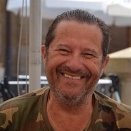


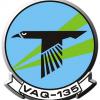

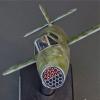
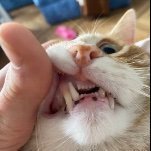
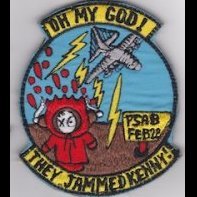
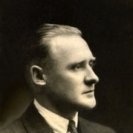

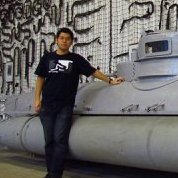

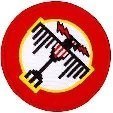

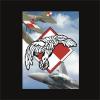
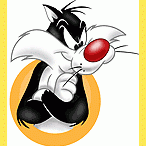
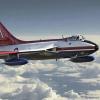
.thumb.jpg.942668eda22ef4e1cceffe7cdb75061d.jpg)
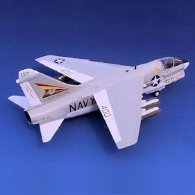

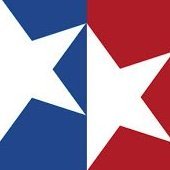
(1).thumb.jpg.37c8b9363bda5835c46d7d41168afa19.jpg)
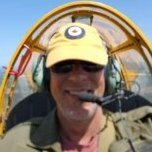
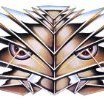
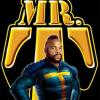

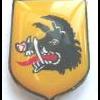
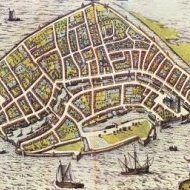
.thumb.jpg.d3635a7ef6507d35f372dd09671fe96f.jpg)
